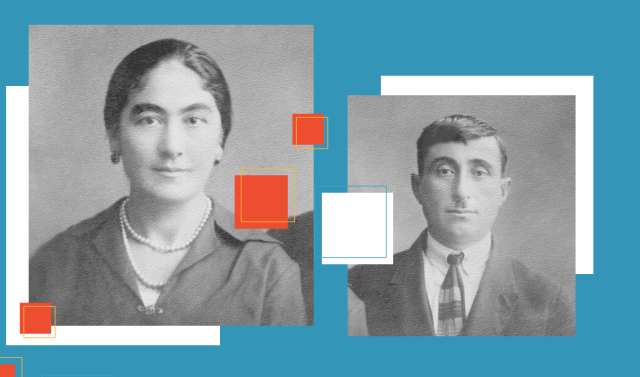Sign up for the Family Tree Newsletter! Plus, you’ll receive our 10 Essential Genealogy Research Forms PDF as a special thank you.
Get Your Free Genealogy Forms
"*" indicates required fields

None of us are safe from errors in our genealogy research. Many software programs (such as RootsMagic) and online family tree services (including Ancestry.com) have built-in tools to help you error-proof your genealogy. But you can take your family tree’s health into your own hands by knowing what issues to look for. Here are five common genealogy errors—and what you can do to prevent them.
1. Ages that Don’t Add Up
Do you have an ancestor who was born before her parents? How about a great-great-grandmother who gave birth at the age of 60 (or at the age of 6)? Incorrect dates can topple your hard-earned research and raise head-scratching questions. Specifically, watch out for these oddities:
- Children born before their parents’ birth
- Women giving birth before the age of 14 or after the age of 50
- Women married before the age of 13
- Individuals who married, bought property, appeared in census records, etc. after their death
Solution: Create a timeline of your ancestor’s life. Timelines can help keep your dates straight and prevent these common-sense errors from occurring. Make sure your timeline includes birth year, and note what age your ancestor would have been during life events you uncover in research. Also look for additional records that might shed light on the circumstances.
ADVERTISEMENT
2. Data Copied from Family Trees
With millions of online family trees on sites like Ancestry.com, FamilySearch and MyHeritage, it’s hard not to peek at someone else’s family tree from time to time.
Fortunately, family research isn’t like your high school algebra class—copying, for the most part, is allowed. Genealogists have collaborated since the first family trees were drawn, and cross-referencing research can save time while providing new leads and connecting you to potential relatives.
However, copying another user’s tree without verifying it first is a recipe for genealogical disaster. The information the user found may apply to another person with a similar name (see No. 5), or the data may be incorrect altogether.
ADVERTISEMENT
Solution: Check other users’ sources before adding their data to your tree. Though copying is allowed, genealogy is like your high-school algebra class in another way: You have to show your work. And you should hold others to that standard as well. See how the information lines up with what you’ve found so far, and determine for yourself if the other user has come to the most accurate conclusion, given their resources. This goes double for records hints on sites like Ancestry.com—not every hint the site suggests will apply to your ancestor.
3. Incorrect Record Indexes
Digitized, indexed records have made genealogy easier than ever before. And indexes on the big genealogy sites make most records keyword searchable, allowing you to survey far more records than traditional methods allowed. But since volunteers or algorithms indexed records collections by the thousands, not all of these indexes are perfect. Your tree may contain the results of a bad record transcription or poorly indexed document.
Solution: View record images whenever possible. Seeing records for yourself and in context can help you sort out details that the indexing program or a volunteer may have missed. This is especially true for handwritten records, as old-style handwriting isn’t always read correctly by software.
4. Typos in Names or Dates
Unfortunately, family trees don’t have spell-check. And even if they did, we still would struggle with avoiding typos. Add to this that spelling wasn’t usually a priority for our ancestors (many of whom couldn’t read), and you’ll understand how easy it is for misspellings to find their way into your family data. These can throw off your research and prevent you from getting matched up with other relevant records in online databases.
Solution: Systematically review your names and dates. Every so often, take a step back and look for typos. Making sure your dates are consistently formatted (e.g., that you always use the MM/DD/YYYY format) can help with this. Also keep an eye out for name variants and multiple spellings of surnames, as your ancestor may be listed as these in records or record indexes.
5. The Wrong Ancestor(s)
Speaking of names: Your family tree may be cursed with a John Smith or a William Jones. (After all, we can’t all have a unique name like “Hannah Montana”!) What if you’ve got the wrong John Smith? Having the wrong person in your tree can be disastrous, wasting your valuable research time and steering you away from records of your actual ancestors.
Solution: Use multiple criteria when searching for ancestors, especially those who had common names. When evaluating records, consider your ancestor’s birth year, occupation, family members and location within a community to make sure you’re following the correct person back in time. Check out a guide to common identity issues for more.
Related Reads
Last updated: March 2023
ADVERTISEMENT










